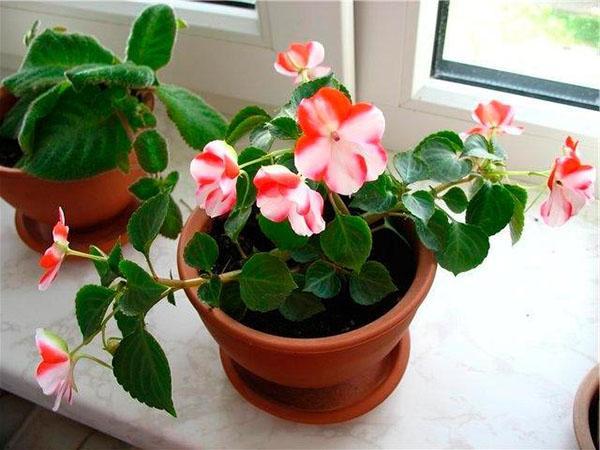Growing indoor balsam
 Room balsam perfectly decorates the windowsills of apartments and offices. These flowers bloom in the summer when they receive the most sunlight. With proper care of this indoor plant, from 15 to 30 large peduncles will form on an adult flower.
Room balsam perfectly decorates the windowsills of apartments and offices. These flowers bloom in the summer when they receive the most sunlight. With proper care of this indoor plant, from 15 to 30 large peduncles will form on an adult flower.
Room balsam, Unlike garden balsam, will not be able to survive low temperatures. Therefore, such a flower is not placed on open balconies. For growing indoor balsam, a southern windowsill or a closed loggia is ideal. There, the plant will receive the greatest amount of sunlight and will not suffer when the temperature drops.
To grow balsam at home, it is necessary to extend the daylight hours to the plant, regularly water the balsam, spray the leaves and fertilize with complex mineral fertilizers, and select the correct soil composition.
Soil for balsam
Indoor balsam loves loose fertile soils, therefore sandy loam soil with the addition of vermicompost or other organic fertilizer is perfect for growing this flower. Due to the structure of the root system, balsam absorbs moisture very well. There is practically no stagnation of water, so it is not necessary to place drainage inside the pot. The main thing is that the soil contains a large amount of calcined river sand and a small part of garden perlite.
Watering and feeding
A small plant should be watered every two days. When the flower forms five true leaves, water it daily. Over time, the soil may settle, then it must be added to the pot.
Together with watering, once a week, wood ash and urea are added to the soil. During the flowering period of balsam, watering is again reduced to once every two days, otherwise the plant may lose its peduncles.
Daylight hours
For abundant flowering of balsam, daylight hours are increased. The most commonly used fluorescent lamps. Daylight hours of indoor balsam should be 12-18 hours so that it blooms earlier, and its flowers are larger and brighter. In addition, the color of some varieties of balsam also depends on the amount of daylight hours. If the flower receives enough sunlight, then its flowers will be two-colored. If the balsam grows in the shade, then its flowers will be dull and monochromatic.